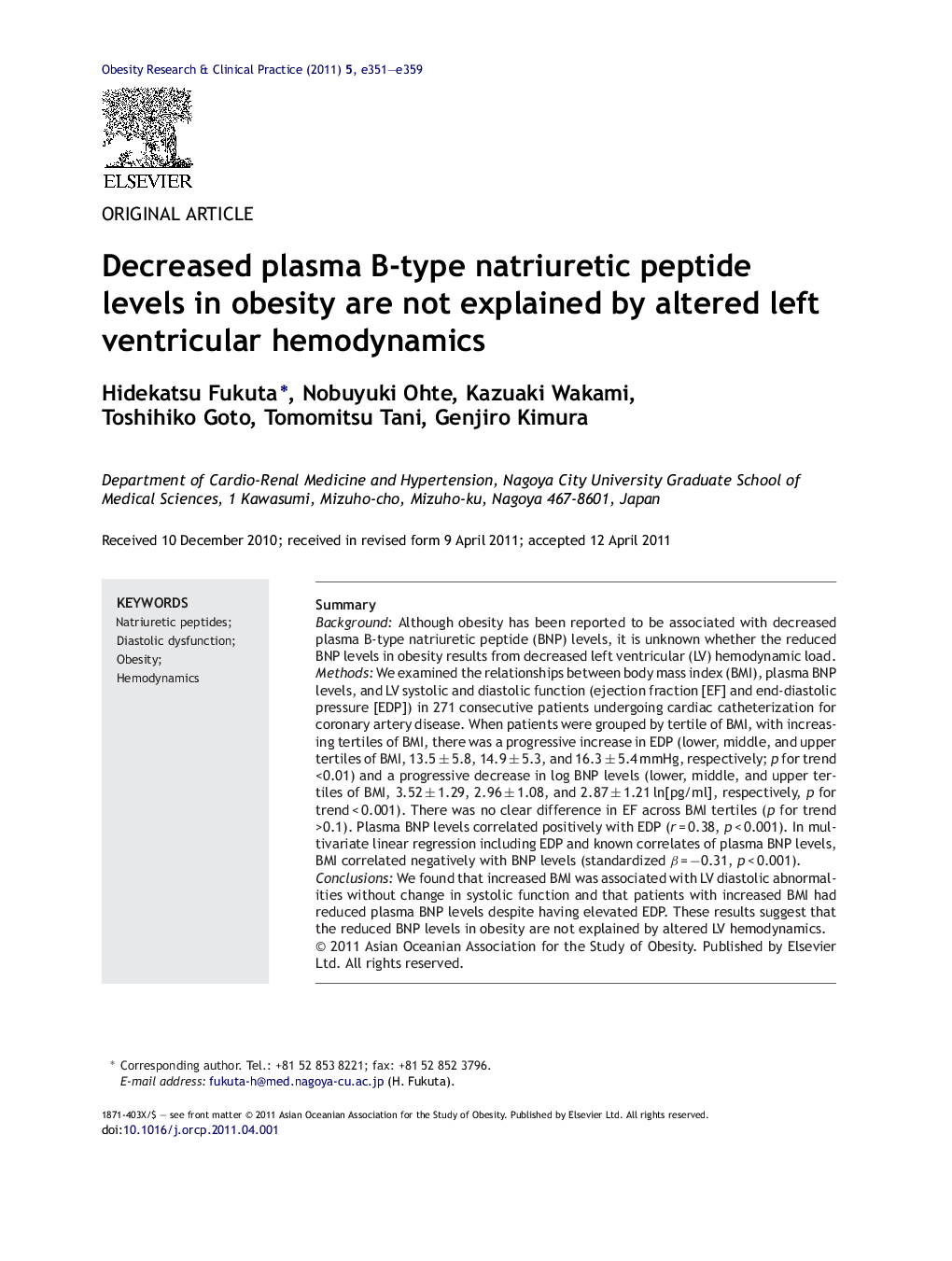| کد مقاله | کد نشریه | سال انتشار | مقاله انگلیسی | نسخه تمام متن |
|---|---|---|---|---|
| 3004187 | 1180834 | 2011 | 9 صفحه PDF | دانلود رایگان |

SummaryBackgroundAlthough obesity has been reported to be associated with decreased plasma B-type natriuretic peptide (BNP) levels, it is unknown whether the reduced BNP levels in obesity results from decreased left ventricular (LV) hemodynamic load.MethodsWe examined the relationships between body mass index (BMI), plasma BNP levels, and LV systolic and diastolic function (ejection fraction [EF] and end-diastolic pressure [EDP]) in 271 consecutive patients undergoing cardiac catheterization for coronary artery disease. When patients were grouped by tertile of BMI, with increasing tertiles of BMI, there was a progressive increase in EDP (lower, middle, and upper tertiles of BMI, 13.5 ± 5.8, 14.9 ± 5.3, and 16.3 ± 5.4 mmHg, respectively; p for trend <0.01) and a progressive decrease in log BNP levels (lower, middle, and upper tertiles of BMI, 3.52 ± 1.29, 2.96 ± 1.08, and 2.87 ± 1.21 ln[pg/ml], respectively, p for trend < 0.001). There was no clear difference in EF across BMI tertiles (p for trend >0.1). Plasma BNP levels correlated positively with EDP (r = 0.38, p < 0.001). In multivariate linear regression including EDP and known correlates of plasma BNP levels, BMI correlated negatively with BNP levels (standardized β = −0.31, p < 0.001).ConclusionsWe found that increased BMI was associated with LV diastolic abnormalities without change in systolic function and that patients with increased BMI had reduced plasma BNP levels despite having elevated EDP. These results suggest that the reduced BNP levels in obesity are not explained by altered LV hemodynamics.
Journal: Obesity Research & Clinical Practice - Volume 5, Issue 4, October–December 2011, Pages e351–e359